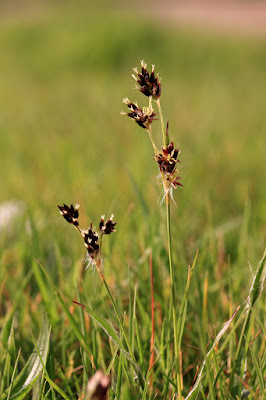One of the really pleasurable aspects of writing these
Nature Notes is that people come to me with nature-related questions or send me
photos of things to identify. Most of
the time I have a good idea of the answers, or at least a good idea of where to
go to look for the answer. One question
was “Why so many crane flies?”. My
answer (Perhaps because of the dry summer making the ground hard and so
difficult for birds to eat the leatherjackets.) was completely wrong. The correct answer is the wet autumn of 2017
which allowed the leatherjackets to thrive, and also, the fact that certain
insecticides have been banned which used to poison the leatherjackets (and lots
of pollinators too!). But at least I now
know, and I had the pleasure of trawling the internet to look it up.
One of the Facebook groups I belong to also spawned a trawl
for more information.
Somebody had
opened a bird box that had been home to a bumblebee colony and was asking what
the white fibrous material was.
Somebody
had answered that it was the silk of
Aphomia
which is a parasite of bumblebees, honey bees, and wasps.
So I then wanted to know what
Aphomia was – it is better known as the
Bee Moth or
Aphomia sociella.
 |
| Bee Moth - Aphomia sociella |
The female bee moth lays her eggs in the
colony early in the season – i.e. before the first workers hatch to build up
the colony’s defences.
When the bee moth
larvae hatch they will eat eggs, bee or wasp larvae, and any pollen or nectar
they can find.
(The caterpillars spin a
particularly strong silk cocoon to protect themselves while feeding.)
So if
you do clean out your bird boxes – and now is a good time to do it – then
please destroy any caterpillars you find in there, and just be aware of queen
wasps that often use nest boxes to hibernate in.
If you want to attract birds to your nest
box, then clean out any old nesting material, but if you want to attract
bumblebees, then leave the nesting material in there, or better still get
another nest box and do both.
One interesting thing that I found out about bee moths was
their mating habits. Most female moths
emit pheromones when they are ready to mate, and most male moths have large
feathery antennae so that they can detect them.
In the case of male bee moths, they also emit their own pheromones to
increase their chances of encountering a female. But the really interesting thing about the
male bee moth is that he has another weapon in his charm arsenal – he can emit
ultrasonic ‘chirps’ in much the same way that cicadas do so that the females
can more easily find him. What I’d be
interested to know if I was a male bee moth is – can bats detect my ultrasonic
‘chirps’? I also found out that the
sound is emitted from the tegular tymbals, but nobody needs to know that unless
they accidentally come across a pair.
To move away from the endlessly fascinating world of insects
for a moment – there are a lot of jays about just now. There a lot of jays about all the time, but
at this time of year they are collecting and caching acorns and other seeds,
and so are more conspicuous. They are
the most colourful of the crow family with their beautiful dark pink plumage
and pale blue wing flashes. Like other
members of the crow family they are very intelligent and will remember where
most of the seeds are buried so that they do not starve through the winter when
other food is scarce and energy demands are high. One fact about jays that can help with
identification is that they are the only crow-sized bird with a white rump, a
useful feature since most birds are seen when flying away from you.
It seems to be a good year for parasol mushrooms. They’re edible and delicious fried in a
little butter.
Stop Press: An Asian Hornet has been spotted at Dungeness. The Asian hornet is more of a threat to honey bees than its larger cousin the European hornet.
When this article went to press for the printed version, I had confused Bee moths (
Aphomia sociella) with the similar Wax Moth (
Galleria mellonella). The Wax Moth is normally found in honey bee hives as its larvae feed on honeycombs - particularly old honeycombs so that they are less of a burden to the colony than Bee Moths.







































